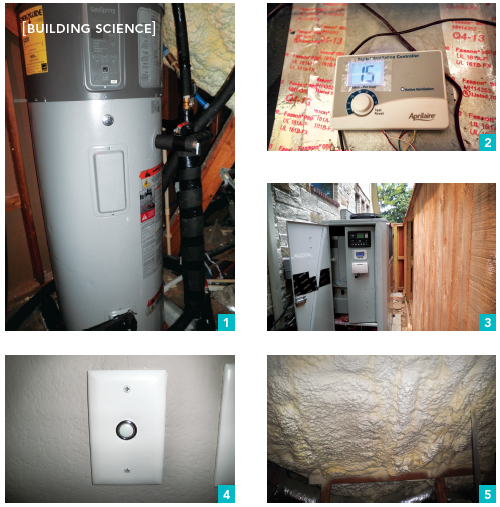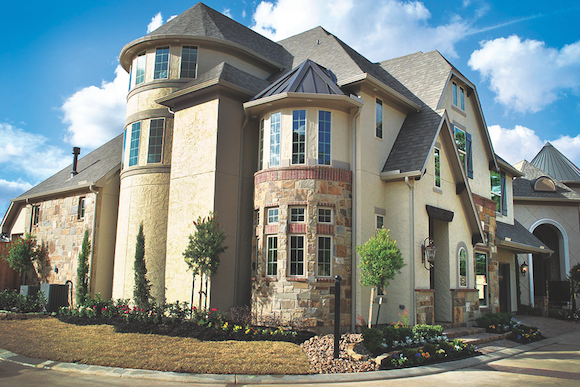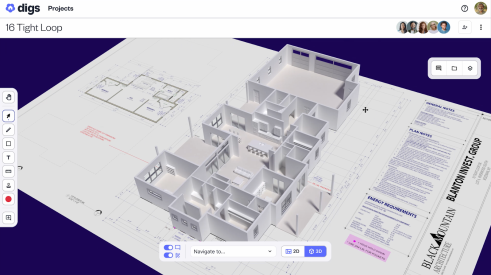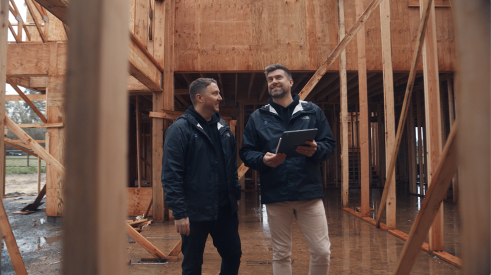Last year, M Street Homes, a midsize Houston-area builder, had its first Zero Energy Ready Home (ZERH) certified. The home employs a unique bundled arrangement of mechanical systems that make it the first house in the world to use a tri-generation system to supply electricity, heating, and cooling on site.
Co-generation—using waste heat from one process for heat or energy production in another process—has been used in industrial settings for several years, and micro-generation systems for homes are now being used in Europe and Asia. But the tri-generation system in the M Street home is the first of its kind.
Generator Boosts Efficiency
The micro tri-generation system in this home starts with a natural gas–fired, 85 percent–efficient generator that uses a 23-horsepower engine. The generator can produce up to 6 kilowatts (kW) of power—enough to meet the peak load demands for this highly efficient 4,500-square-foot home. The generator will run between 40 percent and 60 percent of the time, using between 250 and 300 ccf (100 cubic feet) of natural gas per month and generating 3,000 to 5,000 kilowatt hours (kWh) of electrical and thermal energy. However, without the electrical load from the air conditioner compressor, water heater, and furnace, the home will typically consume about 2 kW to 3 kW of electricity per hour.
All space heating for the home is provided by waste heat from the tri-generation system. Liquid coolant used to cool the generator absorbs heat from the engine and carries it to the radiator coils located in the electric furnace plenum, where the furnace blower distributes the heat throughout the home with a heating efficiency of 100+ percent. Another hot-water loop circulates from the generator to a heat exchanger outside the heat pump water heater. The water heater is essentially a storage tank and is only used for water heating if needed; the liquid line heats all of the water used by the family.
Four Power Sources
The home also features 1.2 kW of photovoltaic panels on the south side of the home. The direct current (DC) power produced by the solar panels is sent to the tri-generation system where it is converted to alternating current (AC) through an inverter. The inverter is part of the energy control system, which manages the home’s four power sources (generator, solar, deep-cycle batteries, and utility grid) to provide the best power source. On sunny days, the solar energy will be used first.
If more solar power is being produced than is needed, the excess power will be used to charge the four batteries. The batteries, whose primary purpose is to manage peak loads, can be used to power the home for short periods of time. The main source of power is the internal combustion engine generator, which automatically engages when the house load exceeds the PV and battery capabilities, or when there is a demand for cooling. The grid serves as a backup to the generator in the unlikely event that the generator becomes inoperable, and it is the mechanism by which excess power is delivered to the power provider. With the tri-generation system, the home is expected to operate as a net-zero—if not a plus-energy—home. Any credit from surplus power generation can offset the cost of the natural gas needed to run the generator.
New Company, Decades of Experience
Not only does the M Street home meet all of the U.S. Department of Energy’s ZERH program requirements, it’s built to Energy Star Certified Homes Version 3.0 standards and meets both the Environmental Protection Agency’s Indoor AirPlus and WaterSense requirements as well as 2012 International Energy Conservation Code insulation levels.
Although M Street was founded in 2009, its past president Bob Solomon and vice president of sales and energy Randy Erwin have decades of experience with a national production home builder. Erwin brought his experience starting that company’s national energy-efficiency program to M Street, where energy-efficient construction has been embraced by the founder’s son and current president, Matt Solomon. M Street has a strategic plan to be the leader in energy efficiency in Houston. “But we don’t just do things for the sake of doing them,” Erwin says. “We want to do things that make sense for our customers and ourselves—and this made sense.” M Street’s first DOE Zero Energy Ready Home has attracted a great deal of media attention. The builder was even honored by the mayor when the City of Houston proclaimed May 8, 2014, Energy Independence Day to celebrate technological advancements made by M Street.
Erwin has high hopes for the technologies demonstrated in the DOE ZERH. He foresees the day when developers build communities equipped with tri-generation plants owned and maintained by a third party that harvests the power for resale to the utility grid, while homeowners enjoy the benefits of low or no utility bills. “The residual income the builder could experience from this type of arrangement would be astronomical,” Erwin says. “This is the beginning of the distributed grid.”

1/ Waste heat from the tri-generator provides hot water; a high-efficiency heat-pump water heater provides backup. Waste heat alone can usually heat enough water for a family of four. 2/ The fresh air setup includes a filtered air intake wired to the central HVAC system. Controls are on a timer to ensure consistent fresh air intake. Exhaust fans in the kitchen, bathrooms, and laundry room pull stale, moist air out. 3/ The tri-generation system incorporates cooling, heating, and power production with a generator that produces electricity. There are PV panels, batteries, and grid-tied access for backup power. The generator drives the AC compressor, too. 4/ On-demand hot water pumps rush hot water to faucets at the push of a button, limiting water waste. 5/ Attic insulation includes 7 inches of open-cell spray foam covering the underside of the roof deck for a sealed, conditioned attic space and added performance.
Key Features
• Walls: 2x4 and 2x6 16-inch on-center framing; 1½-inch closed-cell spray foam cavity insulation; balance of cavity filled with blown cellulose; 1-inch taped, grooved XPS rigid foam over OSB sheathing; total wall insulation value R-23
• Roof: Unvented attic; raised heel trusses 7 inch, R-26, open-cell spray foam under roof deck (covering rafters); 30-year architectural shingles over 15-pound or 30-pound felt and metal roof over elastomeric underlayment
• Foundation: Post tension; 6-mil polyethylene vapor barrier under slab
• Windows: Double-pane, low-E, vinyl-framed; U=0.33; SHGC=0.20
• Air sealing: 1.82 ACH 50
• Ventilation: Fresh air intake to central HVAC with metered timered controls; bath, kitchen, and laundry exhaust fans
• HVAC: Gas-fired tri-generator for electricity, heating, and cooling with grid tie, PV tie, and battery storage; generator-driven air conditioning compressor; waste heat heats fluid for fan coil and domestic water heating
• Hot water: Co-generator heated; heat pump water heater backup
• Lighting: 90 percent CFL and LED
• Appliances: Energy Star-rated dishwasher, refrigerator, freezer, ice maker, wine cooler
• Solar: 1.2 kW photovoltaics
• Water conservation: Two recirculation loops; EPA WaterSense faucets and toilets
Learn more about DOE Zero Energy Ready Home program qualifications at: http://energy.gov/eere/buildings/zero-energy-ready-home
For more details on this home and others awarded DOE’s Housing Innovation awards for excellence in building Zero Energy Ready Homes, visit http://energy.gov/eere/buildings/housing-innovation-awards.
Advertisement
Related Stories
Building Technology
Putting AI at the Center of Home Building
Even though my wife and I worked with a top-notch, reputable custom home builder, building our first custom home turned out to be more challenging…
Building Technology
Unlock Home Builder Success: Insights from Leading Customer Experience Brands
How to provide clients with “the right information at the right time” experience
Building Technology
Simplify Your Homebuilding Operations with Centralized Data
What if you could design homes and launch communities faster? Higharc helps builders radically simplify design, sales, and construction with one…






